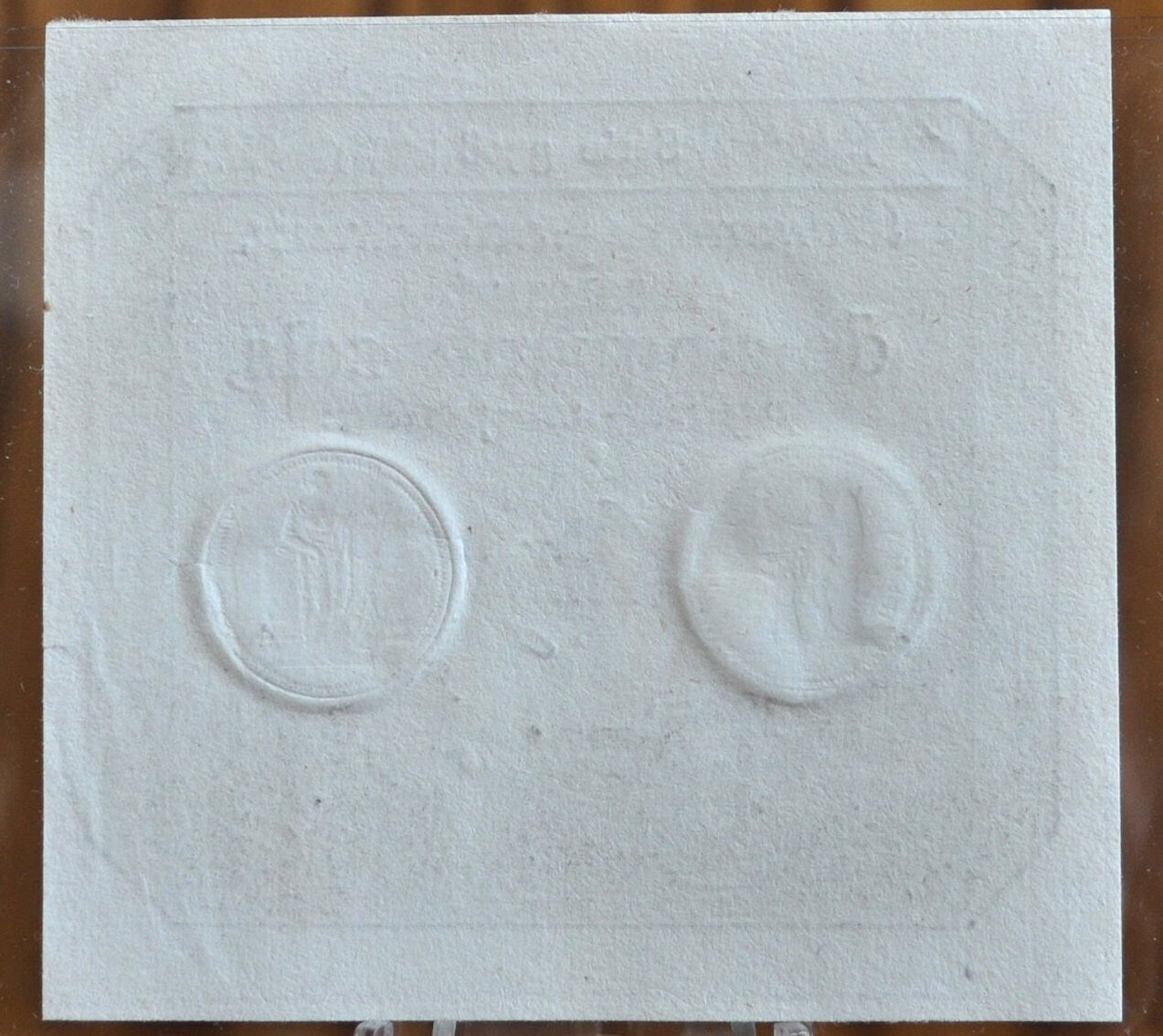1793 France 50 Sols Banknote - French Revolution, Uncirculated, Beautiful Art, Assignat Note de cinquante sols Series 3308, Napoleonic Era
1793 France 50 Sols Banknote - French Revolution, Uncirculated, Beautiful Art, Assignat Note de cinquante sols Series 3308, Napoleonic Era
This listing is for a very well preserved 50 Sols Banknote from 1793 (year 2 of the French First Republic). Beautiful artwork, Gem Uncirculated with raised stamps. Fantastic piece of history. Read more about this note type and what was going in France in 1793 below:
The Assignat Note:
The Assignat was a paper bill issued by France between 1789 and 1796, during the French Revolution. First issued in the form of bonds, the assignat was meant to stimulate France's economy as a quick means to pay off national debt. By August 1793 the amount of assignats in circulation had doubled to 5 billion. Rising prices and food shortages exacerbated public unrest in September.
On 8 November 1793 the director of the manufacture of assignats: Simon-François Lamarche was executed. On 2 December Clavière was arrested; he committed suicide within a week. On 24 February 1794 the extension of the "maximum" to all commodities only increased the confusion. Trade was paralysed and all manufacturing establishments were closed down.
By June 1794 the total number of assignats aggregated nearly 8 billion, of which only 2,464 million had returned to the treasury and been destroyed, after an emission of 1,205 million assignats on 19 June; the assignat was losing more and more value. By the end of July 1795, circulation was increased to fourteen billion. By 1796 the issues had reached 45.5 billion francs, excluding counterfeits, and the Directoire issued Mandats, a currency in the form of land warrants to replace the assignats, although these too quickly failed and were received back by the state at a steep discount. Napoleon opposed all forms of fiat currency. By the 1830s–1840s, the assignats and other papers issued during the Revolution had become collectors' items.
France in 1793 and the Reign of Terror:
The Reign of Terror was a period of the French Revolution when, following the creation of the First Republic, a series of massacres and numerous public executions took place in response to revolutionary fervour, anticlerical sentiment, and accusations of treason by the Committee of Public Safety. There is disagreement among historians over when exactly "the Terror" began. Some consider it to have begun only in 1793. Others, however, cite the earlier time of the September Massacres in 1792, or even July 1789, when the first killing of the revolution occurred.
The term "Terror" used to describe the period was introduced by the Thermidorian Reaction, which took power after the fall of Maximilien Robespierre in July 1794, to discredit Robespierre and justify its own actions. Today there is consensus amongst French historians that the exceptional revolutionary measures continued after the death of Robespierre, and this subsequent period is now called the "White Terror". By then, 16,594 official death sentences had been dispensed throughout France since June 1793, of which 2,639 were in Paris alone. An additional 10,000 to 12,000 people had been executed without trial and 10,000 had died in prison.
Fantastic piece of history.
Thanks for stopping by!
1793 France 50 Sols Paper Note - French Revolution, Uncirculated, Beautiful Art, Assignat Note de cinquante sols Series 3308, Napoleonic Era
Det gick inte att ladda hämtningstillgänglighet








